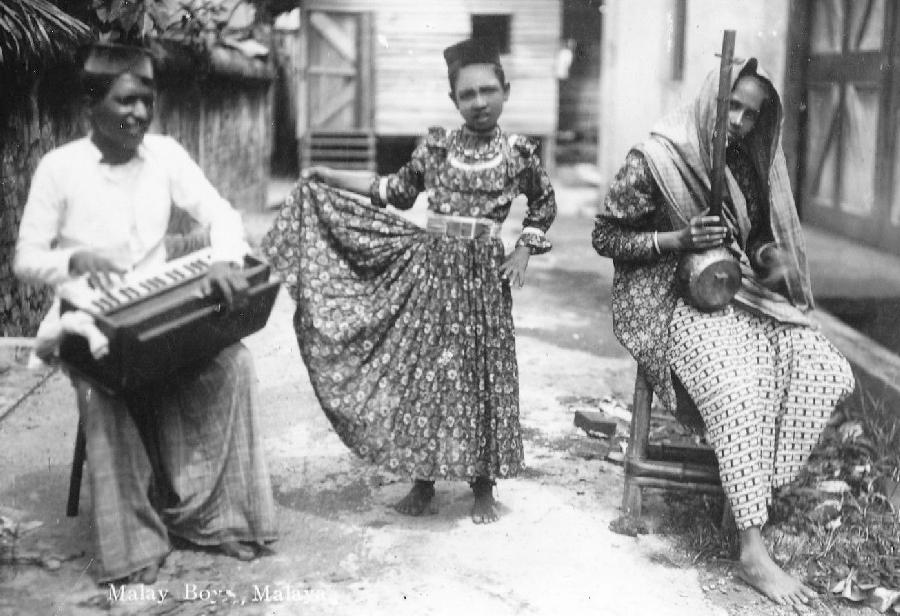
Malaysian Arts

Figure 1.--This postcard probably dates to the 1930 before World War II. Note the accordoan. a Western musical instrument. The other man plays a locally made string instrument, probably a rebab. This was a small enseamble with a boy dancer. Despite the accordian they probbly layed traditionl pieces.
|
|
Malay arts are primarily dance and music. We know little about the visual arts or drama. Malay music was primraily a performance genre. What is now seen as traditional Malay music as well as other performance art, primarily dance, appear to have first appeared in the Kelantan-Pattani region (northeastern Malaysia and neighboring southeastern Thailand). This area was in contact to related South China Sea communities. Acadenics note Indian, Chinese, Thai, and Indonesian influences. The music and dance as far as we acn tell is non-Islanic, probably reflecting the generlly less austere version of Islam prevalent in southeast Asia. The music is mostly built on percussion and to a lesser extent string instruments. The most important instrument the gendang (drum). There some 15 types of drums used, often fashioned by the musicians themselves using loclly available natural materials. Besides the drums, there are other percussion instruments, several made with shell. One popular instrument is the rebab (a bowed string instrument). Wind instruments include the serunai (a double-reed oboe-like instrument), the seruling (flute), and trumpets. Music and dance is commonly combined with storytelling, often celebrating a variety of life-cycle events. Several were part of harvest festivals. There are substntil differences between the east and west close, underlying the impotance of maritime commerce and communication. Along the east coast we see links with the other people of the South China Sea, gong-like instruments are used by musical ensemble such as agung and kulintang. They are often seen in important ceremonies like funerals and weddings. Similar ensembles can be seen in neighboring regions with cultural and ethnic afinities like the southern Philippines, Indonesia (Kalimantan), and Brunei. The Malays of of the west coast have substantial ethnic and culturl dfference. Here the Mlays were in contact with the people of Southeast Asia and largely Buddhist and Hindu influences. One intrestig aspect of Mlay artsare the connection with silat, a martial art. We know of no similar link in other cultures. And with Wetrn colonization came Western instruments. Modern Malaysian forms, inclusing popular music as well as contemporary classical music are essentially Western styles with varying Malay elements. P. Ramlee played a key role in creating a modern Malay musical genre that mixed trditional folks songs with Western dance rhythms as well as west Asian music.
HBC

Navigate the Boys' Historical Clothing Web Site:
[Introduction]
[Activities]
[Biographies]
[Chronology]
[Cloth and textiles]
[Clothing styles]
[Countries]
[Topics]
[Bibliographies]
[Contributions]
[FAQs]
[Glossaries]
[Images]
[Links]
[Registration]
[Tools]
[Boys' Clothing Home]
Navigate the Boys' Historical Clothing national pages:
[Return to the Main Malaysian page]
[Return to the Main Asian page]
[Afghanistan]
[Bangladesh]
[Bhutan]
[Cambodia]
[China]
[India]
[Indonesia]
[Pakistan]
[Singapore]
[Sri Lanka]
[Tajikistan]
[Turkmenistan]
[Uzbeckistan]
Created: 10:55 PM 2/9/2014
Last updated: 10:55 PM 2/9/2014



